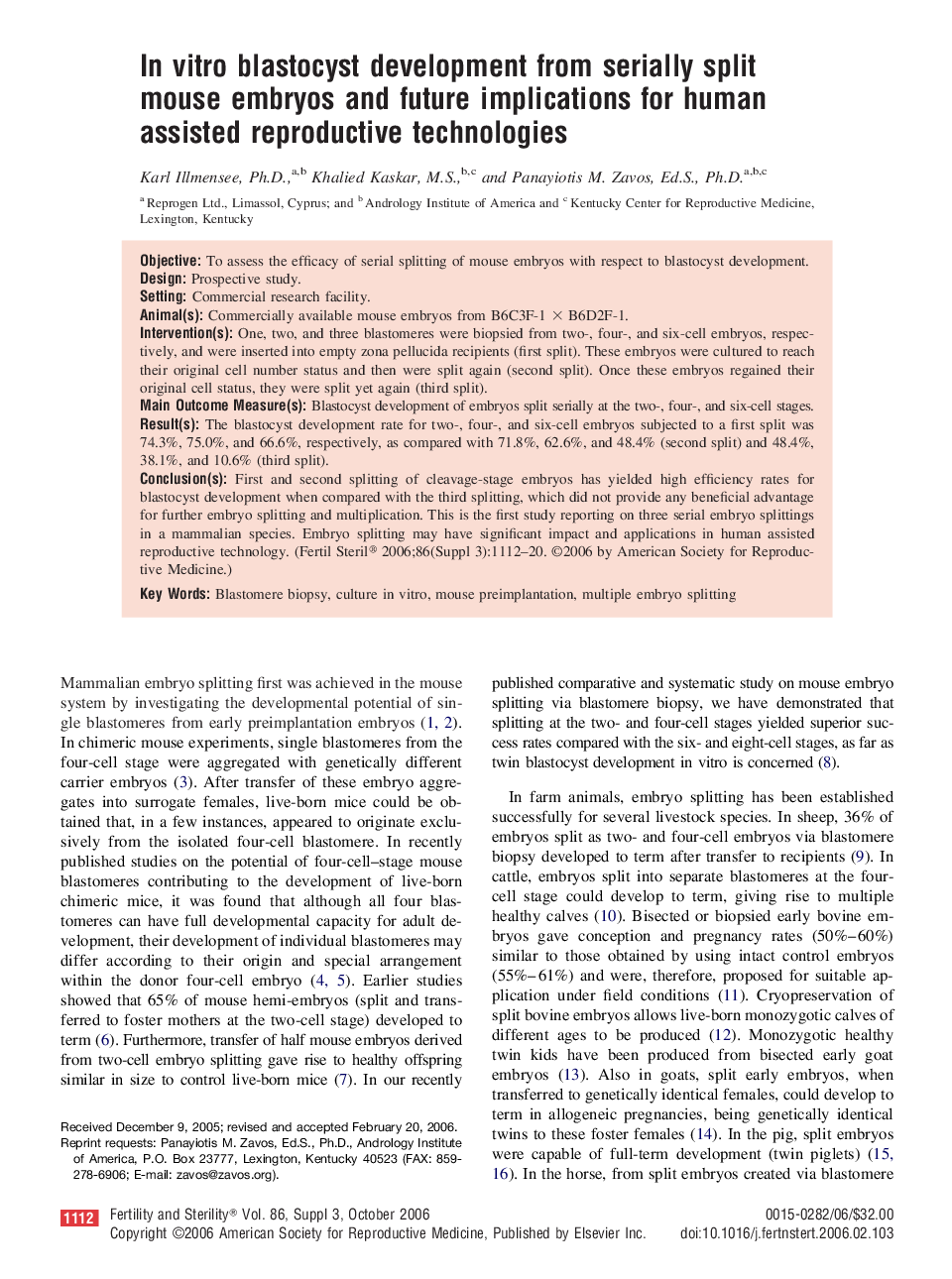| کد مقاله | کد نشریه | سال انتشار | مقاله انگلیسی | نسخه تمام متن |
|---|---|---|---|---|
| 3940782 | 1253595 | 2006 | 9 صفحه PDF | دانلود رایگان |

ObjectiveTo assess the efficacy of serial splitting of mouse embryos with respect to blastocyst development.DesignProspective study.SettingCommercial research facility.Animal(s)Commercially available mouse embryos from B6C3F-1 × B6D2F-1.Intervention(s)One, two, and three blastomeres were biopsied from two-, four-, and six-cell embryos, respectively, and were inserted into empty zona pellucida recipients (first split). These embryos were cultured to reach their original cell number status and then were split again (second split). Once these embryos regained their original cell status, they were split yet again (third split).Main Outcome Measure(s)Blastocyst development of embryos split serially at the two-, four-, and six-cell stages.Result(s)The blastocyst development rate for two-, four-, and six-cell embryos subjected to a first split was 74.3%, 75.0%, and 66.6%, respectively, as compared with 71.8%, 62.6%, and 48.4% (second split) and 48.4%, 38.1%, and 10.6% (third split).Conclusion(s)First and second splitting of cleavage-stage embryos has yielded high efficiency rates for blastocyst development when compared with the third splitting, which did not provide any beneficial advantage for further embryo splitting and multiplication. This is the first study reporting on three serial embryo splittings in a mammalian species. Embryo splitting may have significant impact and applications in human assisted reproductive technology.
Journal: Fertility and Sterility - Volume 86, Issue 4, Supplement, October 2006, Pages 1112–1120